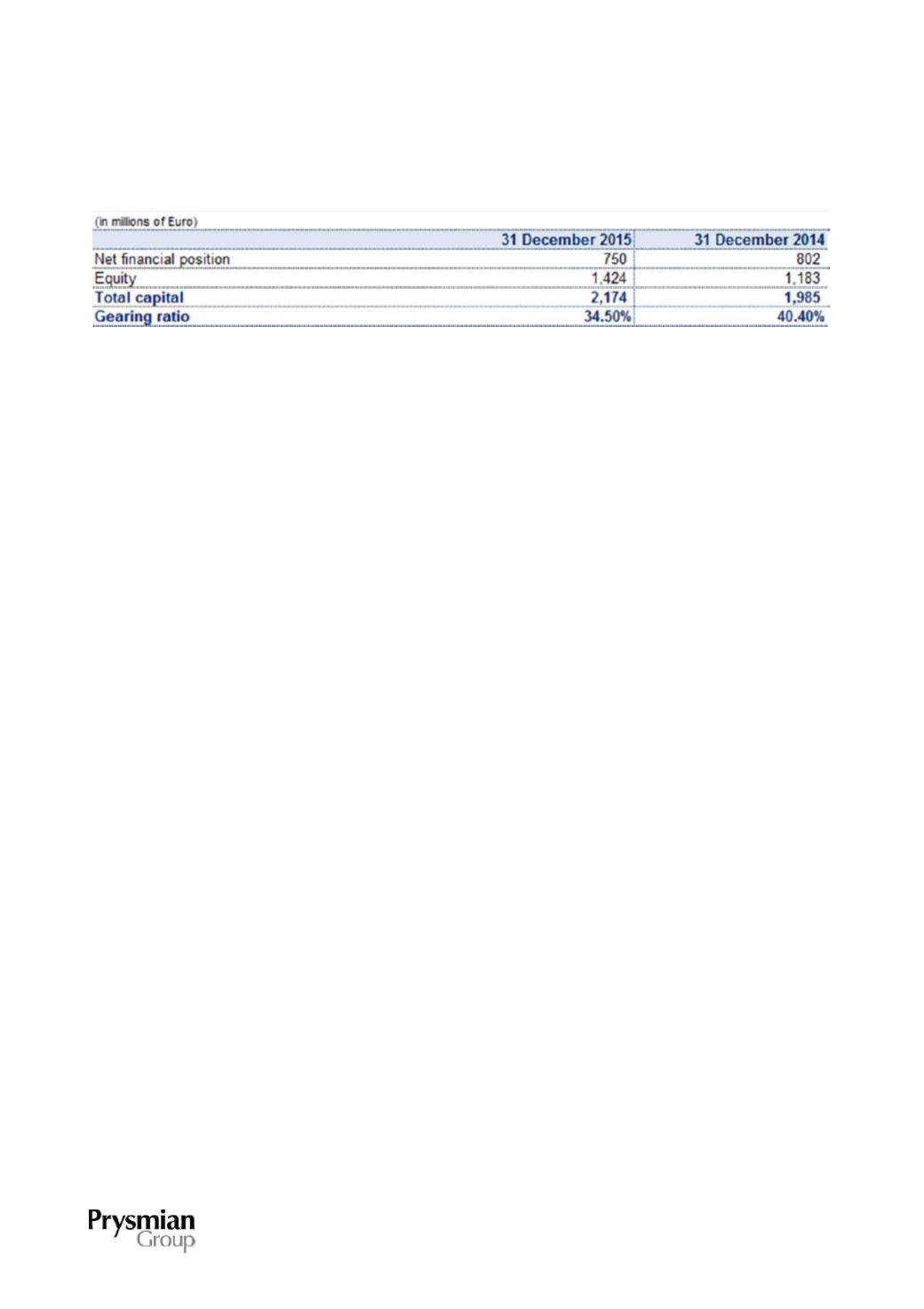

CONSOLIDATED FINANCIAL REPORT | EXPLANATORY NOTES
183
The gearing ratios at 31 December 2015 and 31 December 2014 are shown below:
C.2 FAIR VALUE
With reference to assets and liabilities recognised in the statement of financial position, IFRS 13 requires
such amounts to be classified according to a hierarchy that reflects the significance of the inputs used in
determining fair value.
Financial instruments are classified according to the following fair value hierarchy:
Level 1
: fair value is determined with reference to quoted prices (unadjusted) in active markets for identical
financial instruments. Therefore, the emphasis within Level 1 is on determining both of the following:
(a)
the principal market for the asset or liability or, in the absence of a principal market, the most
advantageous market for the asset or liability; and
(b)
whether the entity can enter into a transaction for the asset or liability at the price in that market at
the measurement date.
Level 2
: fair value is determined using valuation techniques where the input is based on observable market
data. The inputs for this level include:
(a)
quoted prices for similar assets or liabilities in active markets;
(b)
quoted prices for identical or similar assets or liabilities in markets that are not active;
(c)
inputs other than quoted prices that are observable for the asset or liability, for example:
i.
interest rate and yield curves observable at commonly quoted intervals;
ii.
implied volatilities;
iii.
credit spreads;
(d)
market-corroborated inputs.
Level 3
: fair value is determined using valuation techniques where the input is not based on observable
market data.

















